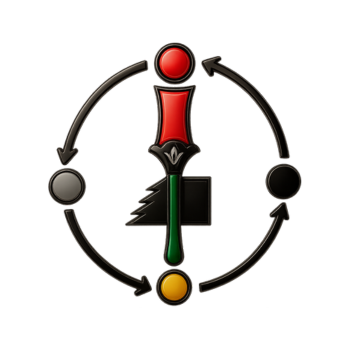-
The lifeline between a developing child and its female parent is the umbilical cord. Many Afrikan cultures consider the umbilical cord as an essential part of birth rituals. The drying up or falling off of the cord connotes the full coming into being of a new person. Once an infant comes into the world from the womb, it remains attached to the mother until the umbilical cord is cut, tied and then cut or detached in some way. The baby is no longer a part of its mother’s womb, but now a part of the family and community into which it is born. The umbilical cord is reflective of continuity because the baby is usually reflective in some way, shape or form as a continuation of it’s ancestors, elders and family group. The cord connotes collectively as the child becomes an extension of its immediate and extended family.
The cord’s departure or falling off is perceived as symbolic of the actuality of a new family member who is now a part of the family group. Afrikan people reinforce their cultural traditions in this trireality via their births and ceremonies. In birth ceremonies and rituals, Afrikans include the cord, along with the placenta, in various ways. Sometimes both the cord and placenta are buried before, during or after a naming ceremony. In some instances, only the placenta is disposed of through burial. The Kikuyu of East Afrika for example bury the placenta in an uncultivated field because open pastures symbolise for them all that is new, fertile as well as strong. The Yansi of Central Afrika (DRC pictured below) throw the placenta’s physical remnants into the river as a way of showing that the child belongs to the community.

